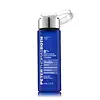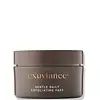What's inside
What's inside
 Key Ingredients
Key Ingredients

 Benefits
Benefits

 Concerns
Concerns

 Ingredients Side-by-side
Ingredients Side-by-side

Water
Skin ConditioningGlycolic Acid
BufferingAlcohol Denat.
AntimicrobialMethyl Gluceth-20
HumectantPropylene Glycol
HumectantHamamelis Virginiana Water
AstringentSodium Hydroxide
BufferingGlycerin
HumectantSodium PCA
HumectantAloe Barbadensis Leaf Juice
Skin ConditioningAllantoin
Skin ConditioningCamellia Sinensis Leaf Extract
AntimicrobialChamomilla Recutita Flower Extract
MaskingArginine
MaskingSodium Ascorbyl Phosphate
AntioxidantLactic Acid
BufferingCitric Acid
BufferingPolysorbate 20
EmulsifyingButylene Glycol
HumectantPotassium Sorbate
PreservativeSodium Benzoate
MaskingBenzoic Acid
MaskingPhenoxyethanol
PreservativeWater, Glycolic Acid, Alcohol Denat., Methyl Gluceth-20, Propylene Glycol, Hamamelis Virginiana Water, Sodium Hydroxide, Glycerin, Sodium PCA, Aloe Barbadensis Leaf Juice, Allantoin, Camellia Sinensis Leaf Extract, Chamomilla Recutita Flower Extract, Arginine, Sodium Ascorbyl Phosphate, Lactic Acid, Citric Acid, Polysorbate 20, Butylene Glycol, Potassium Sorbate, Sodium Benzoate, Benzoic Acid, Phenoxyethanol
Water
Skin ConditioningButylene Glycol
HumectantGluconolactone
Skin ConditioningPolysorbate 80
EmulsifyingPropylene Glycol
HumectantLactobionic Acid
BufferingTocopheryl Acetate
AntioxidantTetrahexyldecyl Ascorbate
AntioxidantCamellia Sinensis Leaf Extract
AntimicrobialChondrus Crispus Extract
Skin ConditioningCucumis Sativus Fruit Extract
EmollientCitrus Grandis Peel Oil
MaskingCitric Acid
BufferingArginine
MaskingPolysorbate 20
EmulsifyingSodium Hydroxide
BufferingCaprylyl Glycol
EmollientDisodium EDTA
Chlorphenesin
AntimicrobialPhenoxyethanol
PreservativeWater, Butylene Glycol, Gluconolactone, Polysorbate 80, Propylene Glycol, Lactobionic Acid, Tocopheryl Acetate, Tetrahexyldecyl Ascorbate, Camellia Sinensis Leaf Extract, Chondrus Crispus Extract, Cucumis Sativus Fruit Extract, Citrus Grandis Peel Oil, Citric Acid, Arginine, Polysorbate 20, Sodium Hydroxide, Caprylyl Glycol, Disodium EDTA, Chlorphenesin, Phenoxyethanol
Ingredients Explained
These ingredients are found in both products.
Ingredients higher up in an ingredient list are typically present in a larger amount.
Arginine is an amino acid that is important for human development. Your body uses is it to produce hair keratin and skin collagen.
As a cosmetic ingredient, Arginine has antioxidant properties and can also help repair damaged skin. This ingredient is derived either synthetically or from animals.
Arginine isn't fungal acne safe when used in the presence of other lipids (fats, fatty acids, oils, esters, etc). Oils and fats occur naturally within the skin, so take caution when using Arginine if you're prone to fungal acne.
Learn more about ArginineButylene Glycol (or BG) is used within cosmetic products for a few different reasons:
Overall, Butylene Glycol is a safe and well-rounded ingredient that works well with other ingredients.
Though this ingredient works well with most skin types, some people with sensitive skin may experience a reaction such as allergic rashes, closed comedones, or itchiness.
Learn more about Butylene GlycolCamellia Sinensis Leaf Extract is derived from the leaves of the tea plant. Black tea, green tea, and oolong tea are all harvested from this plant.
This ingredient has many skin benefits:
This ingredient contains polyphenols, a strong antioxidant. Antioxidants help fight off molecules that damage skin cells.
On top of that, the antioxidants in green tea neutralize free-radicals from the sun. This gives the skin some extra UV protection, but should not replace sunscreen.
Many components of tea have anti-inflammatory properties.
Polyphenols and L-theanine help soothe the skin and reduce irritation. The caffeine in Camellia Sinensis Leaf Extract helps calm inflamed blood vessels.
Other compounds found in tea include: Vitamin Bs, linoleic acid, magnesium, calcium, iron, and zinc.
Research has shown both drinking Camellia Sinensis Leaf Tea and applying it to the skin can help boost skin elasticity and hydration. Studies also show using tea extract may reduce sebum, or oil, production.
Learn more about Camellia Sinensis Leaf ExtractCitric Acid is an alpha hydroxy acid (AHA) naturally found in citrus fruits like oranges, lemons, and limes.
Like other AHAs, citric acid can exfoliate skin by breaking down the bonds that hold dead skin cells together. This helps reveal smoother and brighter skin underneath.
However, this exfoliating effect only happens at high concentrations (20%) which can be hard to find in cosmetic products.
Due to this, citric acid is usually included in small amounts as a pH adjuster. This helps keep products slightly more acidic and compatible with skin's natural pH.
In skincare formulas, citric acid can:
While it can provide some skin benefits, research shows lactic acid and glycolic acid are generally more effective and less irritating exfoliants.
Most citric acid used in skincare today is made by fermenting sugars (usually from molasses). This synthetic version is identical to the natural citrus form but easier to stabilize and use in formulations.
Read more about some other popular AHA's here:
Learn more about Citric AcidPhenoxyethanol is a preservative that has germicide, antimicrobial, and aromatic properties. Studies show that phenoxyethanol can prevent microbial growth. By itself, it has a scent that is similar to that of a rose.
It's often used in formulations along with Caprylyl Glycol to preserve the shelf life of products.
Polysorbate 20 is made by combining ethoxylation of sorbitan, ethylene oxide, and lauric acid. It is a mild cleansing agent, surfactant, and emulsifier.
As a surfactant, it helps collect dirt and oils for washing. Emulsifiers prevent oils and water from separating.
Polysorbate 20 also adds scent to a product. Since it is made using sorbitol, it has a sweet scent. Sorbitol can also be found in fruits such as apples and peaches.
The lauric acid used to create Polysorbate 20 is often derived from coconuts.
Polysorbate 20 may not be fungal acne safe.
Learn more about Polysorbate 20Propylene Glycol is an odorless, colorless liquid. As a humectant, it helps skin retain moisture. It also aids in delivering active ingredients.
Another role of this ingredient is preventing a product from melting or freezing. Propylene glycol also adds antimicrobrial properties to a product, elongating product lifespan.
This ingredient is considered an organic alcohol and commonly added into both cosmetics and foods.
Those with sensitive skin or conditions may develop a rash when using this ingredient.
Learn more about Propylene GlycolSodium Hydroxide is also known as lye or caustic soda. It is used to adjust the pH of products; many ingredients require a specific pH to be effective.
In small amounts, sodium hydroxide is considered safe to use. However, large amounts may cause chemical burns due to its high alkaline.
Your skin has a natural pH and acid mantle. This acid mantle helps prevent harmful bacteria from breaking through. The acid mantle also helps keep your skin hydrated.
"Alkaline" refers to a high pH level. A low pH level would be considered acidic.
Learn more about Sodium HydroxideWater. It's the most common cosmetic ingredient of all. You'll usually see it at the top of ingredient lists, meaning that it makes up the largest part of the product.
So why is it so popular? Water most often acts as a solvent - this means that it helps dissolve other ingredients into the formulation.
You'll also recognize water as that liquid we all need to stay alive. If you see this, drink a glass of water. Stay hydrated!
Learn more about Water